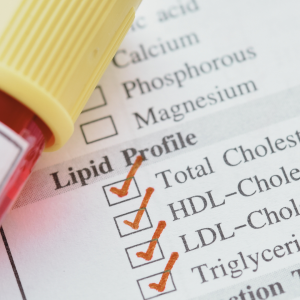Welcome back to the third installment of our blog series on cholesterol, where we aim to shed light on the intricacies of this essential component of life. In the quaint town of Travelers Rest, SC, where Life in Balance Wellness strives to promote holistic well-being, we delve into a crucial aspect often overlooked in standard cholesterol discussions.
The Basics Revisited:
In our previous blogs, we emphasized that cholesterol is not inherently bad; rather, it is a vital component of cell membranes and plays a crucial role in the synthesis of steroid hormones. We also highlighted that the cholesterol in your food has minimal impact on the cholesterol levels in your blood. Furthermore, we dismantled the common misconception of “good” and “bad” cholesterol, emphasizing that cholesterol is simply cholesterol.
Decoding Your Lipid Panel:
Your typical lipid panel provides valuable information about your cholesterol levels, including Total Cholesterol, LDL, HDL, VLDL, and Triglycerides. While HDL is often dubbed “good cholesterol” and LDL “bad cholesterol,” the story is more nuanced than these labels suggest.
Many doctors may recommend statins if your total cholesterol exceeds 200 or LDL levels are above 100. However, these numbers alone don’t provide a comprehensive risk assessment for heart attacks or strokes.
Beyond Numbers: Particle Counts Matter:
Consider this analogy: transporting 10,000 basketballs from point A to point B can be achieved by using 10 trucks with 1000 basketballs each or 1000 Smart vehicles with 10 basketballs each. Similarly, your blood test reveals the amount of cholesterol being transported but doesn’t disclose the number of lipoproteins involved.
The more lipoproteins in circulation, the higher the risk of vascular damage. This damage triggers the immune system to form plaques, akin to scabs on the skin. Elevated plaque levels increase the risk of heart attacks and strokes.
The Missing Link: Proper Testing
The frustrating part is that the information needed for a comprehensive risk assessment is often overlooked. The solution is simple and affordable: request either the ApoB test (under $20) or the NMR test (under $35). These tests provide insights into the number of lipoproteins, offering a more accurate risk assessment.
Empowering Yourself: Knowledge is Key:
Armed with the insights from the last three blogs, you likely have a deeper understanding of cholesterol than many doctors. Remember, your overall health involves multiple factors, and blood work is just one piece of the puzzle. A holistic approach, encompassing stress management, lifestyle choices, and proper testing, is crucial for a complete well-being picture.
In conclusion, whether you’re navigating the serene streets of Travelers Rest or residing elsewhere, prioritize your health by staying informed and seeking comprehensive assessments. Life in Balance Wellness is here to guide you on your journey to a healthier, more balanced life.
